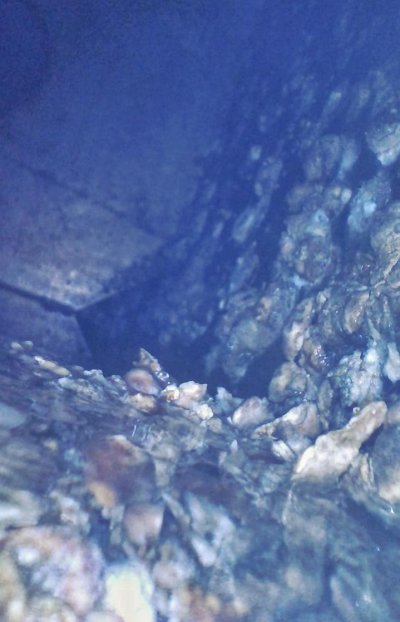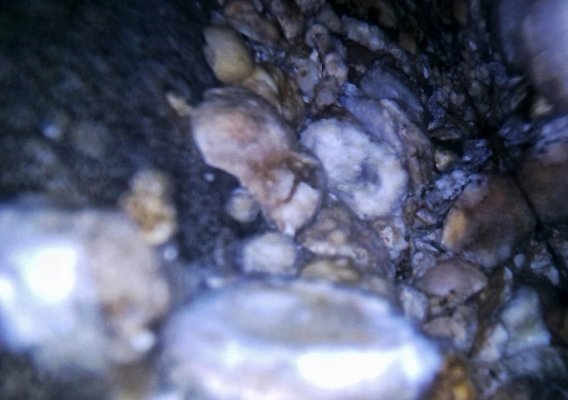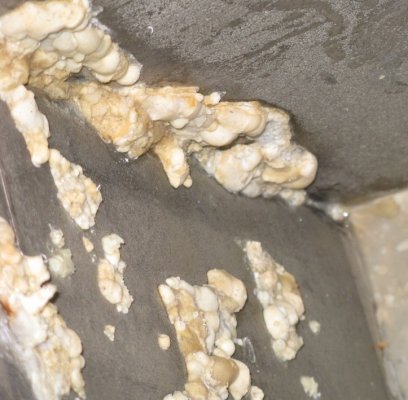Hi Stiggy,
While no chemist, my investigations into exactly your issues with my aluminum water tanks has lead me to my personal opinion: aluminum fresh water tanks are absolutely wrong for pleasure boat use. Again, while no chemist, it is my belief that all marine-grade alloys commonly used for freshwater tanks react negatively to the presence of generic chlorine in most city water systems commonly used to fill our tanks when pierside. The presence of chlorine negatively reacts with the alloying elements in the tank walls (manganese, magnesium, chromium, etc.) to leach out what I call "crusticles" (see attached picture from one of my tanks). Are they aluminum oxide? Aluminum chloride? Only a mass spectrograph will tell for sure.
While I disagree that these crusticles pose a significant health risk, they DO form corrosion pockets under each and every one of them. These pits can, and absolutely WILL cause aluminum water tanks to eventually fail. My best, but educated guess is that aluminum water tanks aboard pleasure boats have a 20-year useful life. Beyond that, they're on borrowed time.
Unfortunately, I know of no "fix" for the situation, as few water tanks in production boats are designed for routine inspection, which MAY allow routine cleaning, and possible mitigation of the crusticles before they fail the tank. "Mouse milk" (liquid sealers, for instance) have limited viability, primarily because of the inability to access 100% of the tank's interior on a routine basis.
In my opinion, the only option for tanks in your condition is to remove them, and replace them with either custom made stainless (316-L) tanks, or plastic. In my case, I've been unable to locate plastic tanks with sufficient volume or correct form factor to allow me to use plastic tanks for my replacements, and have used custom welded 316-L tanks as my solution to the exact situation you find yourself in. And yes, I've looked through the Ronco catalog (huge, but not huge enough for my purpose!) until my teeth hurt to no avail. And yes, I've investigated custom welded plastic tanks as well. Believe it or not, custom stainless tanks are, in fact, cheaper and WAY more available, at least here in the Pacific Northwest.
Regards,
Pete



